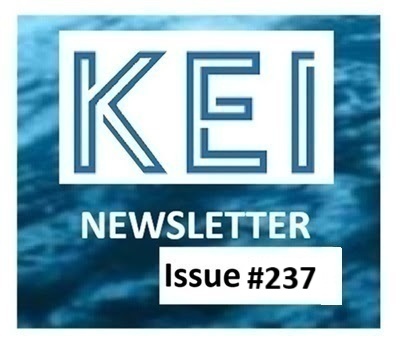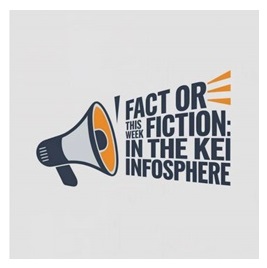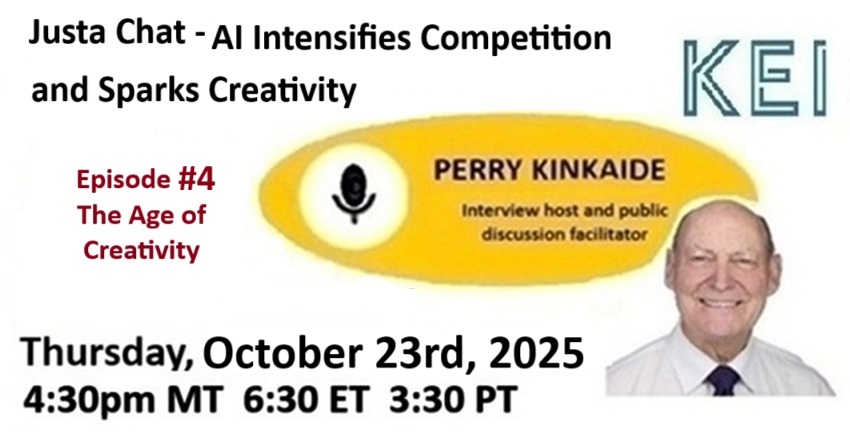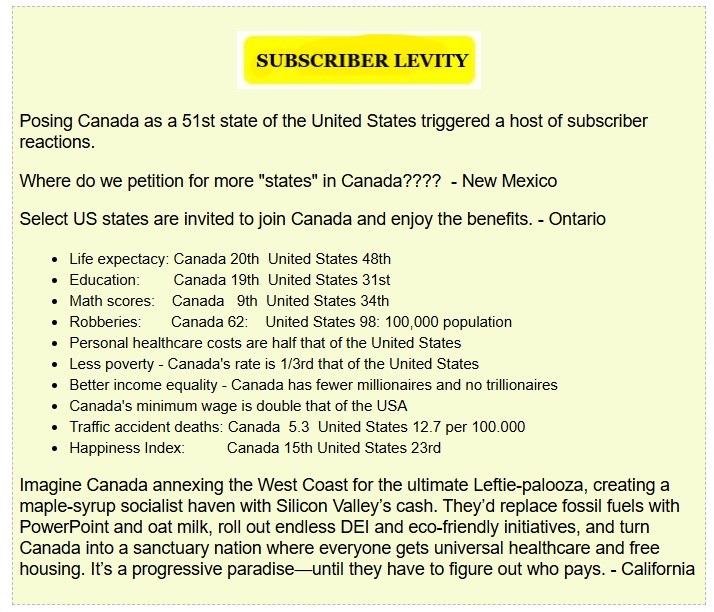|
AI Intensifies Competition Sparking Creativity |
DIRECTORY | ||
|
CONTRIBUTIONS: Two Frontiers of Transformation: Inner and Outer Power - Not recorded |
ACTION: Help sustain KEI's contributions |
Fact or Fiction?
Canadians Aren't Just Kind - They Are Complacent HERE |
|
|
Editor - Perry Kinkaide |
As we explored the views of Youth At the Crossroads, AI and OUR Future, The Age of Creativity, I pondered just what might this all might mean for Canada. We've been discussing the forces and sources of change as insights to the future, but if they are, is the impact on Canada any different than on others, for example, the US? |
||
|
My musing led me to two perspectives, first, in the article below, that AI is indeed transformative, triggering not only an increase of access to knowledge, but an increase in access for everybody, meaning both competition and the sparking of creativity are anticipated. The second, cited in the Fact or Fiction feature above, notes that Canada's kindness comes at a price. The event, also cited below, continues a dialogue about Canada's relationship with it's highly competitive neighbour. — Editor |
|||
|
AI Intensifies Competition Sparking Creativity Artificial Intelligence doesn’t just automate what we do—it accelerates how we think, compete, and create. As KEI’s earlier series explored—Youth at the Crossroads, AI and Our Future, and The Coming Age of Creativity—a deeper pattern has emerged: AI is transforming knowledge from a scarce asset into an abundant resource, while amplifying the conditions that spark human creativity and with it collaboration. In the age of AI, competition becomes the catalyst, and collaboration the multiplier. Together, they define the next stage in the evolution of human ingenuity. The Competitive Engine of Creativity. AI doesn’t simply replace human labor—it rewires the competitive game. The Royal Swedish Academy’s 2025 Economics Prize to Philippe Aghion, Peter Howitt, and Joel Mokyr underscores how “creative destruction” drives growth. Innovation thrives not in monopolies, nor in chaos, but in the balanced “neck-and-neck” zone of healthy rivalry. Continued below
No need to register. Just Zoom in https://us02web.zoom.us/j/84258596166?pw..Continued from above Aghion’s research shows the relationship between competition and innovation is inverted-U shaped:
AI has pushed us squarely into that sweet spot. From foundation-model rivalries (OpenAI vs. Anthropic vs. Meta) to open-source momentum (Llama, Mistral, Falcon), AI has intensified the innovation race while lowering the barriers to entry. Small teams armed with generative tools now compete with industry giants on equal creative footing. As economist Jack Mintz recently noted in the Financial Post, even state-protected monopolies need competition to stay innovative and accountable. Competition, he argues, isn’t destructive—it’s the engine that prevents stagnation and ensures that both markets and institutions remain responsive to change. This insight applies equally to the creative economy: without competitive tension, AI ecosystems risk becoming complacent, centralized, and creatively sterile. Competition Becomes Collaboration. The paradox of AI is that it makes collaboration the most effective form of competition. Paul Romer’s Nobel-recognized theory of “non-rival ideas” explains why: once knowledge is shared, it can be reused infinitely at near-zero cost. In AI, open architectures, shared datasets, and interoperable APIs turn rivalry into a collective accelerator. This is visible across every creative frontier:
Competition, when well-governed, fuels creativity not by replacing human thought but by widening participation—making creation accessible to millions. Empirical Signs: The New Productivity of Play. Recent studies reveal how generative AI boosts creative throughput across scales.
AI thus turns productivity into play: more experiments, more iterations, more creative risk-taking per unit of time. The old equation—work = output—is evolving toward a new one: creativity = learning × experimentation. The Human Edge: Insight, Ethics, and Imagination. Yet amid this whirlwind of competition, the true advantage remains deeply human. AI can accelerate discovery, but only humans can decide why to pursue certain paths and how to use insight wisely. The next creative frontier depends not only on how fast we innovate, but on whether our innovations deepen human experience and ethical understanding. AI’s greatest promise lies in its ability to extend human imagination, not erase it. Creativity becomes an act of dialogue—between mind and machine, insight and automation, rivalry and reflection. The KEI Imperative: Guard Rivalry, Nurture Humanity. For leaders, educators, and youth engaged with KEI’s mission, the challenge is clear:
As AI accelerates the automation of thought, our task is not to slow it down but to steer it wisely. Creativity, at its core, remains an act of courage—the courage to imagine differently, to collaborate openly, and to compete honorably. The Age of Human-Centered Creativity. The Age of Creativity is not defined by machines that create, but by humans who choose what creation means. AI amplifies the tempo of innovation, but the melody remains ours to compose. In this new era, the most creative act may be to remain human—curious, ethical, collaborative, and endlessly inventive.
Many in the KEI Network are taking seriously and are concerned about the overture for Canada to be the 51st state. We are continuing the dialogue with Victoria next. Levity prevailed for some as reflected in the quotes cited here.
|







